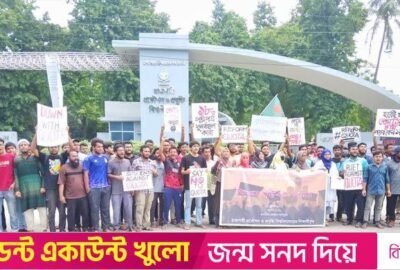According to Finance Minister Muhammad Aurangzeb, Pakistan is on track to receive a new loan from the International Monetary Fund (IMF) as macroeconomic conditions align favorably to help the country’s faltering economy. He voiced optimism about Pakistan’s currency stabilization and predicted that runaway inflation will fall to single-digit levels by the end of next year.
Finance Minister Aurangzeb, a veteran banker, visited the IMF and World Bank Spring Meetings in Washington shortly before Pakistan’s US$3 billion bailout expired last year, averting a potential debt default. He emphasized the IMF’s willingness to accept a larger, more comprehensive program, which is critical for Pakistan as it pursues a rumored US$6 billion loan. However, Aurangzeb underlined that the US$6 billion is only a preliminary estimate, with exact details to be determined during the IMF mission’s visit to Islamabad.
Pakistan’s economic issues are diverse, including a slow bureaucracy, pervasive corruption, and decades of unstable security, all of which have historically discouraged investment. Furthermore, the country’s vulnerability to climate change, as demonstrated by the disastrous 2022 floods that cost an estimated US$30 billion in damage, hinders its economic prospects.
Aurangzeb underlined the need for at least three years of assistance to achieve reforms in areas like taxation and energy. He also emphasized the importance of remittances from Pakistanis overseas, notably the one million Pakistanis in the UAE. Despite the World Bank’s projection of a 10 percent reduction in remittances, Aurangzeb anticipates a rise, estimating remittances of roughly US$29 billion this fiscal year. This injection of foreign money is critical for supporting the rupee, which has lost more than 40 percent of its value against the dollar since the epidemic began.
Aurangzeb expects the rupee to stabilize, with just a 6 to 8 percent annual depreciation going ahead.
Pakistan’s inflation, which peaked at over 38 percent, has since dropped to roughly 21 percent and is predicted to dip below 10 percent by the end of 2025. However, Pakistan’s per capita GDP remains much lower than that of its neighbor India. Despite this, Aurangzeb identified numerous bright spots in Pakistan’s economy, including a thriving technology industry that has risen from absolutely nothing to around US$3.4 billion. This industry has the potential to reach US$4.5 billion or US$5 billion in the future year.
Agricultural production has also improved, following the devastating floods of 2022 that ravaged crops in Sindh and Punjab. However, large-scale manufacturing continues to struggle due to rising energy prices and loan rates. To encourage greater foreign investment, Pakistan formed the Special Investment Facilitation Council (SIFC) to expedite processes. The recent visit of Saudi Foreign Minister Prince Faisal bin Farhan highlights Pakistan’s attempts to promote Saudi investment under this program.
China has made significant investments in Pakistan through the China-Pakistan Economic Corridor (CPEC), but Pakistan has been hesitant to reap the benefits. However, there is a desire to move forward with CPEC Phase Two, which will focus on monetizing projects and increasing exports through special economic zones.
The IMF’s engagement has already had a favorable influence on Pakistan’s economy, with the benchmark share index reaching a record high. Discussions between the IMF and Pakistani authorities are underway, intending to finalize a new loan program following the completion of a US$3 billion short-term program last month, which helped avert a sovereign debt default.
The IMF mission, led by Nathan Porter, is in negotiations with Pakistan’s bilateral and multilateral partners to evaluate the financial support required to support the country’s reform initiatives.
The IMF’s reform program for Pakistan seeks to shift from economic stability to robust, inclusive, and resilient growth. This involves improving public finances through more equitable taxes, increasing expenditure on human capital, social protection, and climate resilience. The program also focuses on ensuring the energy sector’s sustainability by lowering high energy costs and maintaining progress towards low and stable inflation through appropriate monetary and exchange rate measures. Furthermore, the reforms aim to enhance public service delivery by restructuring and privatizing state-owned businesses (SOEs) while fostering private sector development by guaranteeing a fair playing field for investment and greater governance.
The IMF has emphasized that prioritizing reforms to revitalize Pakistan’s economy is more essential than the amount of the current loan package under negotiation. Despite this, Pakistan is likely to seek at least US$ 6 billion under the new program, as well as extra finance from the IMF through the Resilience and Sustainability Trust. These developments occur against the background of major problems for Pakistan’s economy, with the IMF warning that downside risks remain extremely high. Nevertheless, the suggested reforms and financial assistance are critical measures in stabilizing and revitalizing Pakistan’s
economy. The country’s economic future is significantly dependent on the effective execution of these reforms and the smart utilization of foreign investment, notably through programs such as CPEC.
To break free from the restraints imposed by foreign financial institutions, Pakistan must focus on developing its productive sectors and strengthening the role of state-owned firms. The CPEC presents a major potential, but Pakistan must view it as an economic opportunity rather than a charity, assuming full responsibility for each project to enjoy the advantages without
jeopardizing critical national interests. Self-reliance, proactive reform, and judicious utilization of foreign capital are ultimately the keys to Pakistan’s long-term prosperity and economic rebirth.
The post Pakistan hopes to check inflation by the end of 2025 appeared first on BLiTZ.






